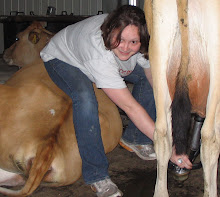As if our day at the cataratas hadn't provided us with enough adventure, we had a particularly eventful bus trip to Buenos Aires. Our bus left Puerto Igauzu around three p.m. The highways was being blocked by a group of maté growers, or materos, protesting unfair compensation. The price of maté to the consumer had increased, but the producers weren't seeing any of that money. This is similar to what is happening with milk prices in the US, greatly effecting the dairy farms in central New York, where I live, and putting many of them out of business. When I asked our bus driver why we were stopped, he blamer it one diez perejiles locos. While I can't translate this comment and retain the nuance, it literally means "ten crazy parsleys."
 Maté
Maté is a vital part of Argentine daily life (as well as Uruguayan, Paraguayan and Chilean) and national identity, especially in the northeastern province of Misiones where the bulk of it is grown. It is traditionally drunk out a gourd, dried and hollowed out, through a
bombilla (left), a metal straw with a strainer at the bottom to keep you from sucking up the leaves, is a social event. The
maté (the gourd itself) is filled with
yerba (pictured below, the dried leaves from a plant related to the holly family), top it with almost boiling water from a kettle or thermos, drink, refill with water before passing it to the next person. The drink is bitter, so many people ad sugar until they develop a taste for it.
The traditional
gaucho (Argentine cowboy) is often pictured with
maté in hand, and for a time drinking maté was seen as old-fashioned and fuddy duddy. In the past decade or two it had been re-embraced by the young people, becoming popular with students. What better way to keep yourself awake while finishing that big paper or design project? An afternoon catching up with friends is undoubtedly spent
matéando (Yes, the ritual of drinking of
maté is so important as to merit its own verb) while munching on
agridules (square little crackers whose flavor is a moreish combination of savory and sweet), perhaps followed by coffee and
facturas. People fill up their thermoses at gas stations on long road trips, and families tote their
maté and
bombilla, along with a day's supply of
yerba and hot water in specially designed carriers with them on the beach. You can even buy a disposable kit, in case you forget your own. (pictured above)
It got dark during the five hours we were stopped. Luckily, the beautiful, cloudless January afternoon turned into a warm, breezy evening. The bus drivers and passengers, alike, stood around smoking and drinking
maté. Time wore on, the massive cue grew longer and thermoses were drained. The taxi driver ahead of us went on a mission, loaded down with thermoses, and returned to a big round of applause. He taxi driver had saved the day, and
matéando continued!
Crisis averted.





















































